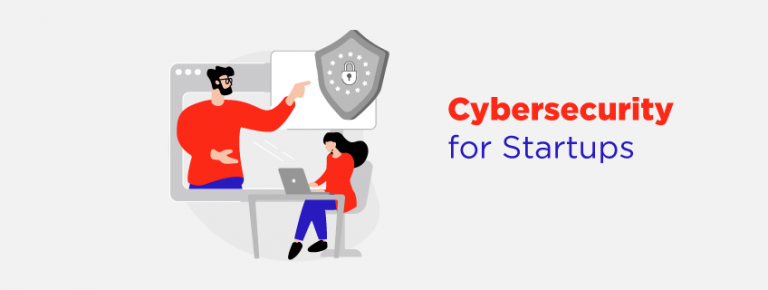In the digital age, where businesses operate in a highly interconnected world, the importance of robust cybersecurity cannot be overstated. For businesses, particularly small to medium-sized businesses like yours, the consequences of a cyberattack can be devastating. It’s not just about the immediate financial impact, but also the potential loss of customer trust and damage to your brand’s reputation. This is where the importance of conducting a security assessment in cyber security comes into play.
At Upper Echelon Technology Group, we firmly believe in the power of proactive measures to mitigate cyber risks. We know that understanding your organization’s vulnerabilities is the first step towards building a secure digital infrastructure. A comprehensive cybersecurity risk assessment can reveal hidden vulnerabilities, enabling us to develop strategies that strengthen your defenses and keep your business safe in an increasingly unpredictable cyber landscape.
A cybersecurity risk assessment is a systematic process that involves identifying and analyzing potential cyber threats that could adversely affect your organization. It is a critical part of any comprehensive cybersecurity strategy, helping to prioritize resources and ensure that defenses are focused where they are most needed.
In the simplest terms, a cybersecurity risk assessment involves:
- Identifying what needs to be protected (assets)
- Understanding the threats and weaknesses that could affect these assets
- Assessing the vulnerabilities that could be exploited
- Evaluating the potential business impact if these risks materialize
- Developing a plan to manage and mitigate these risks effectively
This infographic provides a visual representation of the cybersecurity risk assessment process, highlighting the key steps that are involved. Each step is crucial in understanding the risks your business faces, and how to effectively mitigate them.
Stay with us as we delve deeper into the art of mastering cybersecurity assessments, uncovering its importance, the process involved, different types of security assessments, and the role of standard frameworks in conducting these assessments.
Understanding the Importance of Security Assessment in Cyber Security
In the constantly evolving digital landscape, the importance of security assessment in cyber security cannot be overstated. As a cybersecurity-focused managed services provider, we at Upper Echelon Technology Group understand that in-depth security assessments are the lifeblood of robust cybersecurity strategies. They provide the blueprint for defending your business against potential threats and ensuring the integrity of your information assets.
The Role of Security Assessment in Protecting Information and Resources
A well-executed security assessment helps organizations identify, assess, and implement key security controls in applications and networks. It goes beyond superficial checks and delves into the deepest recesses of your system to identify risks and threats. Think of it as a health check for your technology ecosystem.
The goal is to understand the extent to which security controls are implemented correctly, are operating as intended, and are producing the desired outcome with respect to meeting the security requirements for your information system or organization. In short, security assessments can test the effectiveness of an organization’s cyber defenses and provide the security team with valuable insights, enabling them to make informed decisions about resource allocation and threat mitigation strategies.
In a world where cyber threats are becoming increasingly sophisticated, having an up-to-date, comprehensive understanding of your organization’s security posture is essential. It is the first step towards developing a robust, effective, and proactive cybersecurity strategy that aligns with your business needs.
The Impact of Ineffective Risk Assessments on Data Breaches
On the flip side, ineffective risk assessments can significantly increase your risk of data breaches, exposing your sensitive data to unauthorized access, modification, or destruction. This can have devastating consequences for your business, including financial losses, reputational damage, and legal repercussions.
To paint a picture, imagine setting up a security system for your home, but failing to assess the effectiveness of the locks on your back door. This oversight could provide an easy entry point for burglars, putting your home and valuables at risk. Similarly, an ineffective or outdated security assessment could leave your business vulnerable to cyber attacks, making it an easy target for cyber criminals.
In a world where data has become one of the most valuable commodities, businesses cannot afford to leave their cybersecurity to chance. Regular, comprehensive security assessments are pivotal in ensuring your defense mechanisms are up to scratch and your business is well-protected against the ever-changing landscape of cyber threats.
At the Upper Echelon Technology Group, we take cyber security assessments seriously, helping businesses reinforce their cyber defenses and stay one step ahead of potential threats. Our approach is holistic, taking into account the unique needs and challenges of your business to ensure your information assets are well-protected. We believe that in the battle against cybercrime, proactive defense is the best offense.
In the next section, we will walk you through the step-by-step process of conducting a cybersecurity assessment. Stay tuned to learn more about how you can fortify your business against cyber threats.
The Process of Conducting a Cyber Security Assessment
Cybersecurity is no longer optional for businesses of any size. It’s a necessity for survival in the digital age. The first step towards a solid cybersecurity posture is understanding where your vulnerabilities lie. Here at Upper Echelon Technology Group, we leverage our expertise to conduct comprehensive cybersecurity assessments, tailored to your business needs.
Scoping: The First Step in Cyber Security Assessment
The first phase in the cybersecurity assessment process involves scoping – the process of identifying the various information assets that could be affected by a cyber attack. These could include hardware, systems, laptops, customer data, and intellectual property. It is vital to have a clear understanding of what is at risk to appropriately tailor the cybersecurity controls. Scoping helps us to focus our efforts and resources on protecting the most critical aspects of your business.
Risk Identification: Cataloging Information Assets and Identifying Cyber Threats
Following scoping, we move to risk identification. This critical step involves cataloging all of your information assets and identifying the various threats that could affect those assets. By knowing what and where your assets are, we can better understand the potential threats and how they could exploit your vulnerabilities.
Risk Analysis: Identifying Vulnerabilities and Analyzing Controls
Risk analysis is the process of identifying vulnerabilities in your system and evaluating the existing controls’ effectiveness. This step involves a detailed analysis of your IT environment to identify any weaknesses that could be exploited by threat actors. The goal is to understand the key vulnerabilities and the potential impact if they were exploited.
Risk Evaluation: Calculating the Likelihood and Impact of Scenarios
Once the vulnerabilities and threats have been identified, we move to risk evaluation. This stage involves calculating the likelihood of a threat exploiting a vulnerability and the potential impact it could have on your business. This information is crucial in prioritizing risks and directing resources effectively to mitigate them.
Documentation: Prioritizing Risks and Documenting Results
The final step in the cybersecurity assessment process is documentation. We prioritize the identified risks based on their potential impact and likelihood of occurrence, providing you with a clear overview of your cybersecurity posture. Documenting the results of the risk assessment is not only a requirement for compliance with many standards such as the ISO 27001, but it also forms the basis for strategic decisions on how to manage and mitigate these risks.
At Upper Echelon Technology Group, we believe that a thorough and regular cybersecurity assessment is a cornerstone of a robust cybersecurity strategy. By identifying and addressing vulnerabilities before they can be exploited, we help you stay one step ahead of cyber threats, thus ensuring that your business operates smoothly and securely.
Different Types of Security Assessments in Cyber Security
Security assessments in cyber security come in different shapes and sizes. To master the art of cyber security assessments, it’s essential to understand the various types and their respective roles in fortifying your organization’s cyber defenses. Let’s break down the three main types of security assessments: Security Audits, Vulnerability Assessments, and Penetration Tests.
Security Audits: A Comprehensive Review of Security Controls
A security audit is an in-depth, systematic evaluation of an organization’s information systems. This comprehensive review helps to ensure that the necessary security controls are in place and operating as expected. Unlike a standard review, a security audit is more formalized, requiring documented proof of compliance with a company’s security policies and procedures.
At Upper Echelon Technology Group, we conduct security audits that ensure your organization’s security controls are not just on paper, but are properly implemented and effective. This process helps to identify any gaps or weaknesses in your security posture, allowing for corrective action to be taken before these vulnerabilities can be exploited.
Vulnerability Assessments: Identifying Weaknesses in Security Controls
While a security audit checks for the presence and effectiveness of security controls, a vulnerability assessment takes a different approach. It focuses on identifying weaknesses in an organization’s systems and networks that could be exploited by a malicious actor.
Our team at Upper Echelon Technology Group is skilled at conducting vulnerability assessments. We proactively identify and analyze potential vulnerabilities in your organization’s IT infrastructure, helping you understand the risk they pose and how to remediate them. This proactive approach helps to strengthen your security posture and protect your valuable information assets from potential cyber attacks.
Penetration Tests: Testing the Effectiveness of Cyber Defenses
Penetration tests, or pen tests, are simulated cyber attacks carried out by professionals to test an organization’s cyber defenses. They go beyond vulnerability assessments by not just identifying potential vulnerabilities, but actively exploiting them to gauge the real-world effectiveness of your security controls.
At Upper Echelon Technology Group, we believe in the value of penetration testing in providing a realistic assessment of your organization’s cyber defenses. By putting your defenses to the test, we can identify weak points and provide actionable insights to improve your security posture.
In the realm of cyber security, understanding is the first step towards protection. With the knowledge of these different types of security assessments, you are now better equipped to protect your organization against the ever-evolving landscape of cyber threats. Remember, a robust cybersecurity strategy is not a one-and-done effort, but a continuous process of assessment, improvement, and adaptation.
Utilizing Frameworks for Cyber Security Risk Assessments
Implementing a cybersecurity strategy can be a complex process, especially without a reliable framework to guide your efforts. That’s why we at Upper Echelon Technology Group strongly recommend leveraging industry-standard frameworks to streamline your cybersecurity risk assessments. These established frameworks, such as the National Institute of Standards and Technology (NIST) Cybersecurity Framework and the ISO 27001:2013 standard, offer a structured, comprehensive approach to managing your cybersecurity risks.
The National Institute of Standards and Technology (NIST) Cybersecurity Framework
The NIST Cybersecurity Framework is widely recognized as one of the most robust and flexible risk assessment frameworks available today. It provides a structured approach to assessing cybersecurity risks and prioritizing actions to reduce those risks. As a cybersecurity-focused managed services provider, we frequently utilize the NIST framework when conducting security assessments and implementing cybersecurity strategies for our clients.
The NIST framework allows you to identify your current cybersecurity posture, determine your target state, and track your progress over time. It also facilitates communication about cybersecurity risks among internal and external stakeholders, making it a valuable tool for any organization seeking to enhance its cyber resilience.
The ISO 27001:2013 Standard for Information Security Management Systems
Another reputable framework is the ISO 27001:2013 standard, which provides a comprehensive approach to information security management, including requirements for risk assessment and risk treatment. As a company certified to ISO 27001:2013, we at Upper Echelon Technology Group are well-versed in this standard and its benefits.
The ISO 27001 standard sets out the requirements for an Information Security Management System (ISMS), a systematic approach to managing sensitive company information so that it remains secure. An ISMS includes people, processes, and IT systems by applying a risk management process and giving assurance to interested parties that risks are adequately managed.
By implementing these established frameworks into your cybersecurity strategy, your organization can ensure a consistent, repeatable, and efficient approach to managing cybersecurity risks. This will not only help you safeguard your information and systems but also demonstrate your commitment to cybersecurity to your stakeholders.
In our next section, we will delve into the importance of regularly updating your cyber security risk assessment to keep up with evolving threats. Stay tuned!
Regularly Updating Your Cyber Security Risk Assessment
In the ever-evolving landscape of cybersecurity, resting on your laurels is not an option. Merely conducting a security assessment once and calling it a day won’t cut it. Cyber threats are continuously changing and evolving, meaning your risk profile needs to adapt and evolve too. At Upper Echelon Technology Group, we strongly advocate for regular updates to your cyber security risk assessment.
The Need for Regular Risk Assessments in Response to Evolving Threats
Cyber threats are not static; they are dynamic and continuously evolving. New vulnerabilities are discovered every day, and threat actors are always looking for innovative ways to exploit them. In light of this, organizations need to reassess their cyber risk profiles regularly to identify new threats and vulnerabilities.
The National Institute of Standards and Technology (NIST) Cybersecurity Framework recommends that organizations should conduct risk assessments at least annually or whenever significant changes occur in their information systems, technology, business processes, or regulatory requirements.
In the words of one Reddit user, “In the world of cybersecurity, what worked yesterday may not necessarily work today. This is why regular risk assessments are crucial” [source].
Using Assessment Results to Develop a Security Improvement Plan
Once a security assessment has been completed, its results should be used to develop a security improvement plan. This plan should detail the steps the organization will take to mitigate identified risks and strengthen its cyber defenses.
At Upper Echelon Technology Group, we don’t just conduct assessments; we help you develop a comprehensive security improvement plan based on the assessment results. Our goal is to help you leverage technology in the best way possible to protect your business and make it more profitable.
As a Quora user aptly put it, “The end goal of a security assessment is not just to identify risks but to provide actionable insights that can be used to improve security. It’s one thing to know what your vulnerabilities are; it’s another to do something about them” [source].
In conclusion, regularly updating your cybersecurity risk assessment is a crucial part of maintaining a strong cybersecurity posture. It allows you to stay ahead of evolving threats and ensure your organization’s information and systems are adequately protected. At the end of the day, cybersecurity is not a one-time effort, but a continuous process of assessment, improvement, and reassessment.
Next, we will wrap up our discussion by emphasizing the role of security assessments in maintaining a strong cybersecurity posture. Stay tuned for our conclusion!
Conclusion: The Role of Security Assessment in Maintaining a Strong Cyber Security Posture
Staying one step ahead in the ever-evolving world of cyber threats requires a proactive approach, and this is where security assessments become a game-changer. As we’ve learned, security assessments in cybersecurity are instrumental in identifying, evaluating, and mitigating risks, providing a robust defense mechanism against potential cyber-attacks.
Preventing Data Breaches Through Effective Risk Assessments
Ineffective risk assessments increase the risk of data breaches substantially. As cybersecurity experts, we at Upper Echelon Technology Group understand the intricacies of conducting comprehensive risk assessments. Our approach entails cataloging information assets, identifying cyber threats, and analyzing controls to uncover hidden vulnerabilities. We prioritize risks and document results meticulously, assisting public safety organizations in understanding the cyber risks to their operations.
Ensuring Robust Cybersecurity with Regular Assessments
Remember, cybersecurity is not a destination, but a journey. The cyber threat landscape is constantly evolving, and so must your defenses. Regular assessments are the key to maintaining a strong cybersecurity posture. They enable organizations to stay updated with the latest threats and vulnerabilities, ensuring their security measures are always a step ahead.
Leveraging Technology for Business Growth
Besides mitigating cyber risks, security assessments also play a crucial role in business growth. At Upper Echelon Technology Group, we believe in leveraging technology for enhancing business efficiency and profitability. By identifying areas where technology can improve your bottom line, we help you turn potential vulnerabilities into opportunities for growth.
As a Reddit user aptly put it, “Cybersecurity assessments are like health check-ups for your IT infrastructure. They reveal any underlying issues that might go unnoticed until it’s too late.”
To conclude, cybersecurity assessments are not just about ticking boxes for compliance. They are about establishing a proactive security posture that safeguards your valuable assets while enabling you to leverage technology for business growth. Remember, in this digital age, staying secure is not just an option, but a necessity.
If you are a small to medium-sized business owner in Wilmington, DE seeking a cybersecurity-focused managed services provider who can guide you on this journey, get in touch with us at Upper Echelon Technology Group. We are committed to helping businesses stay safe in the digital world and leverage technology for success.






